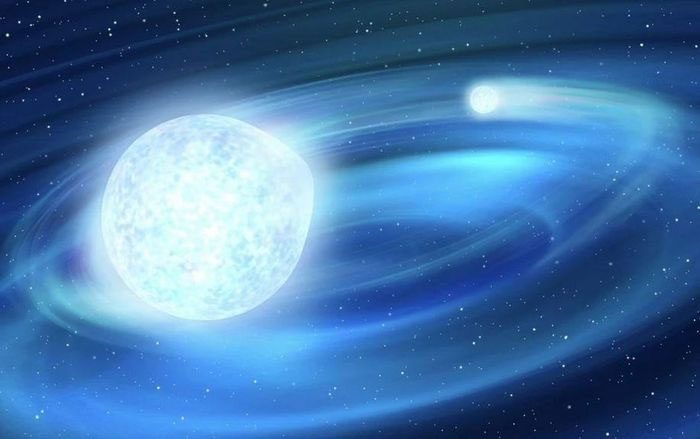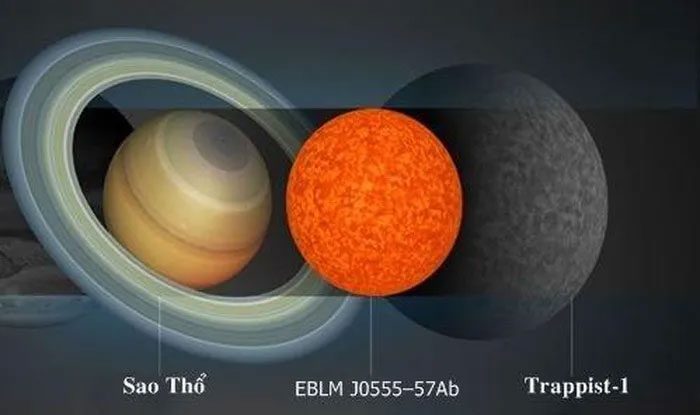A group of astronomers has discovered a peculiar binary star system, featuring the smallest star ever found.
Known as a hot dwarf star, this star is only 7 times the size of Earth and is smaller than Saturn, according to researchers from Tsinghua University, Yunnan Observatory, as well as collaborators from Australia, Europe, and the United States.
This small star and its companion, a white dwarf, are located approximately 2,760 light-years away from Earth. According to research published last week in the journal Nature Astronomy, the hot dwarf star is named TMTS J0526B and was discovered using the Tsinghua University Ma Huateng Survey Telescope (TMTS).
Researchers state that TMTS J0526B has a mass equivalent to one-third that of the Sun and burns helium gas at a surface temperature of 2,500 Kelvin (or 2,226.85 degrees Celsius).
According to the study, TMTS J0526B and its companion, J0526A, are too dim to be observed directly and orbit each other every 20 minutes.
In a statement on Tsinghua University’s website, researchers noted: “Although it cannot be observed with telescopes, we know J0526A exists for one reason: Its extreme density has distorted J0526B from a spherical structure into an egg shape.
A unique binary star system like this, comprising ultra-small, ultra-light stars with extremely short orbital periods, was predicted to exist but had never been discovered before. Now our work provides the first direct observational evidence.”

Artist’s illustration of the binary star system discovered by the international team led by researchers from Tsinghua University.
Reports indicate that this discovery supports a theory proposed by Chinese astronomers two decades ago, which predicted that small, light stars could form through mass exchange in a binary star system.
TMTS utilizes a set of four optical telescopes to continuously search for transient objects in one or two areas of the sky each night. It was built at the Heng Long Observatory near Beijing, China, in 2019, with funding from the Ma Huateng Foundation and Tsinghua University.
By 2023, TMTS had obtained photometric data on over 27 million stars. The research team identified J0526 for further study due to its rapidly changing brightness, which made it stand out from other types.
Researchers confirmed TMTS’s observations using larger telescopes, including the Keck-I telescope in Hawaii (USA) and the Gran Telescopio Canarias in the Canary Islands (Spain).
The research team expects that the next generation of gravitational wave detectors being developed in Europe and China will be able to detect this peculiar binary star system. They noted that the system could emit gravitational waves at millihertz frequencies as its component stars orbit each other.
Red dwarfs were previously thought to be the smallest of all stars and are also the most common type of star in the Milky Way.
According to a 2017 study led by researchers from the University of Cambridge (UK), the smallest red dwarf ever measured is EBLM J0555-57Ab, located 600 light-years away and only slightly larger than Saturn. The study’s results were published in the journal Astronomy & Astrophysics in June 2017.
EBLM J0555–57Ab is part of a binary star system, orbiting a larger star. Although it is quite small compared to other stars, EBLM J0555–57Ab still has enough mass to allow nuclear fusion to occur in its core, converting hydrogen into helium.
“Our discovery shows how small stars can be. If the star EBLM J0555–57Ab had formed with just a slightly smaller mass, the nuclear fusion of hydrogen in its core would not be sustainable, and it would have turned into a brown dwarf,” said Alexander Boetticher, a member of the research team.
EBLM J0555–57Ab has a brightness approximately 2,000 to 3,000 times dimmer than the Sun. Scientists discovered EBLM J0555–57Ab as it moved in front of the larger star it orbits, called EBLM J0555-57A. It is estimated that the mass of EBLM J0555-57Ab is equivalent to that of the Trappist-1 star, discovered in early 2017 but with a radius 30% smaller.

Comparison of the size of EBLM J0555–57Ab with Saturn and the Trappist-1 star – (Photo: Alexander Boetticher).
Small, dim stars like EBLM J0555–57Ab are considered potential candidates for hosting habitable planets, due to their increased likelihood of retaining liquid water on their surfaces. Stars smaller than 20% of the Sun are the most common in the universe, yet there is still much we do not know about them.
Dwarfs are a type of small, very bright star. Specifically, dwarfs are generally smaller than other stars and often have lower surface temperatures. In the stellar classification spectrum, dwarfs typically belong to types M, K, or C, with M being the type of dwarf with the lowest surface temperature among these types.
Dwarf Star Classification Dwarfs can be categorized as follows:
Dwarfs often appear in binary star systems, and due to their small size, they can be difficult to observe directly compared to larger stars. |


















































